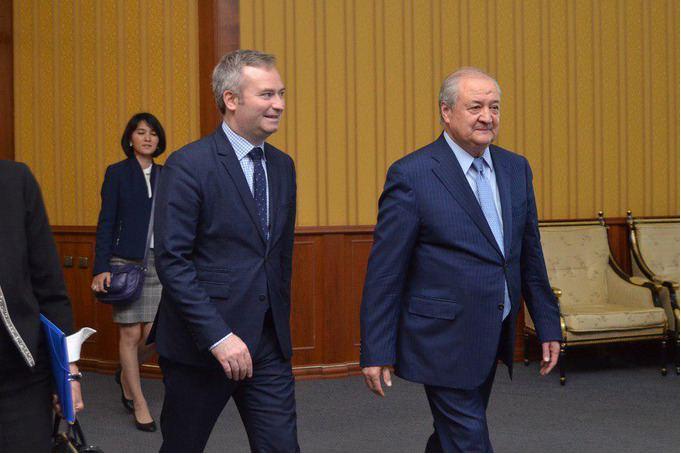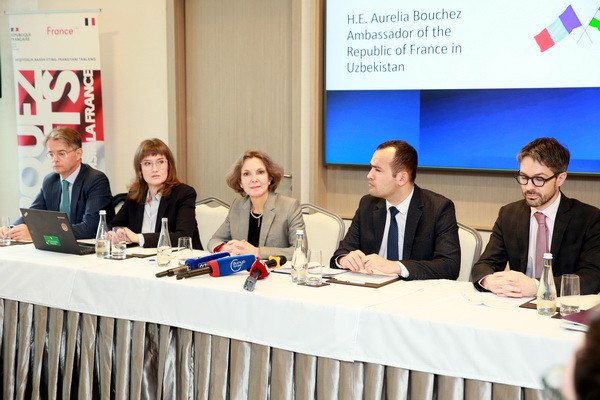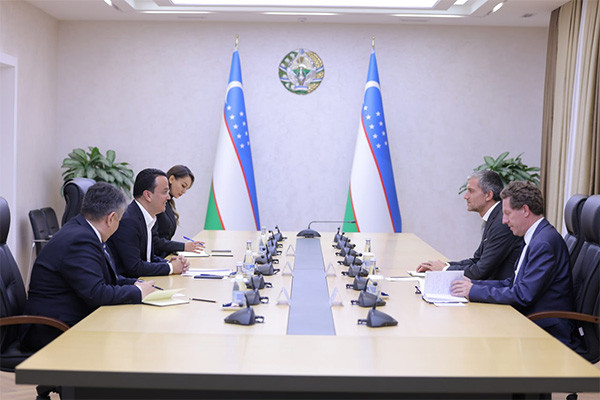- Introduction
Uzbekistan is a resource-rich country strategically located in the heart of Central Asia and surrounded by five landlocked countries. In terms of territory, it is one of the largest countries in the region, with a total area of 449,000 square kilometers, and one of the most densely populated countries with 33.9 million people (2019). At present, the country has the largest working-age population – about 19 million people, which exceeds the working-age population of the countries of Central Asia combined.
In 2017, the government carried out a comprehensive reform to facilitate the transformation of a planned economy (state-led economy) into a market economy by removing distortions in key areas, especially in agriculture, energy and finance. The government abolished the multiple exchange rate regime, liberalized the movement of capital, simplified procedures to facilitate trade with neighbors, and began to deregulate the prices of electricity, natural gas, bread and cotton.
The World Bank rated the country’s risk factor as “Significant”. Although the World Bank is supporting Uzbekistan through several projects (totaling over $4.2 billion), the country’s overall risk level has been assessed as Substantial. The pace and quality of ongoing reforms involve significant risks that require careful monitoring. The most significant risks are political, sectoral, institutional and social. However, the international rating agency Fitch Ratings (April 2020) affirmed Uzbekistan’s long-term foreign currency issuer default rating (IDR) at ‘BB-‘ with a ‘Stable’ outlook.
Uzbekistan has embarked on and remains committed to comprehensive political and structural reformsbut corruption has yet to be completely rooted out. Institutional reforms provide incremental progress in the fight against corruption and the rule of law, which can lead to higher standards of governance. The recent Decree of the President of Uzbekistan “On measures to further improve the system of combating corruption in the Republic of Uzbekistan” provides for the State Anti-Corruption Program for 2019-2020.
- PPP program in Uzbekistan
The Republic of Uzbekistan adopted its first law regulating public-private partnerships, which came into force in June 2019. The law aims to standardize and simplify the procedure for concluding long-term cooperation agreements between the private sector and the state.
Tasks have two directions:
Reduce the pressure on the national budget to fund public infrastructure programs from outside or provide public services by allowing the private party to co-invest/invest or participate in projects; and
Improving the productivity of public infrastructure and public services by attracting private investors, introducing innovations from private entrepreneurship, attracting private expertise and, finally, improving efficiency.
The PPP Development Agency (PPPDP) was established under the Ministry of Finance, is fully operational and is responsible for the formation of the regulatory, legal and methodological framework for the implementation of PPP projects, including participation in the development of sectoral programs and the concept of individual projects.
The PPP AR is also authorized to conduct an examination and risk assessment of PPP projects, as well as to control the progress of the project. Coordination of the activities of state bodies and the organization of their interaction with investors, as well as the development of the potential of specialists are also within the scope of the tasks of the PPP AR.
In April 2020, Resolution of the Cabinet of Ministers No. 259 “On improving the procedure for implementing public-private partnership projects” was adopted, which “determines the procedure for initiating, developing, reviewing all public-private partnership projects, selecting a private partner, accounting for the implementation of PPP projects and implementing them register”.
III. Sector of water supply and sewerage
In addition, the Government is in the process of reforming the infrastructure management system in the water supply and sanitation sector. A wide-ranging water management strategy has been adopted, aimed at corporatization and the transfer of management of water supply and sewerage systems to private operators.
In support of this initiative, two presidential decrees have been issued:
Decree of the President of the Republic of Uzbekistan NºPP 4040 “On additional measures for the development of drinking water supply and sewerage systems in the Republic of Uzbekistan” for the implementation of “transfer of water supply and sewerage systems in the cities of Samarkand, Bukhara, Namangan and Karshi (“Four Cities”) to private operators under the PPP scheme, And
Decree of the President of the Republic of Uzbekistan NºPP 4300 “On measures to further improve the mechanisms for attracting foreign direct investment in the economy of the republic”
The water supply and sanitation sector is the highest priority for national development and is supported by several development banks, including the Asian Development Bank, which provides sovereign loans as part of its investment program in the water supply and sanitation sector.
- Energy (distribution) sector
Uzbekistan is an energy-intensive country, where the level of energy supply per unit of GDP among the EECCA countries (Eastern Europe, Caucasus and Central Asia) is second only to Turkmenistan. Energy intensity is high due to hydrocarbon production and inefficient consumption. The country’s energy infrastructure is outdated and inefficient, and demand management measures are weak in all sectors of the economy. Improving the efficiency of supply and demand can go a long way towards eliminating winter supply shortages due to old gas-fired power plants, which are 40% less efficient than modern thermal plants.
Five-Year Roadmap for Energy Efficiency and District Heating Development sets ambitious goals for a significant increase in energy efficiency in all sectors of the economy through further modernization, technical and technological re-equipment of existing production facilities, the creation of new industries solely on the basis of modern energy efficient technologies and the wider use of renewable energy sources.
The country ranks second in energy intensity among OECD countries. The imbalance between decreasing capacity and increasing demand contributes to the development of energy systems and related services.
Although Uzbekistan is fully self-sufficient in energy from its gas sector, the country’s aging infrastructure is struggling to keep up with rising domestic demand. Waste, overuse and funding remain problematic. Wide-ranging reforms aimed at improving and diversifying the energy sector have been submitted for consideration, and the government has adopted an Action Strategy for 2017-2021, which prioritizes improving energy efficiency and increasing generation capacity and the use of renewable energy sources. Uzbekistan is part of the EU Energy Program4, an initiative focused on evidence-based policy development in the energy sector;
As the standard of living rises, the demand for energy in Uzbekistan, in the medium and long term, will steadily increase. Investment in new infrastructure is unlikely to grow at the same pace due to a lack of resources and capacity. This will put more strain on the overburdened system and lead to more supply shortages. It is estimated that the supply gap will reach 20% of planned consumption by 2020 if the required investment is not delivered on time; and
Uzbekistan has significant potential for the use of solar energy, wind, biomass, as well as small and large hydropower capacities.
The energy sector is an important component for country transformation
Uzbekistan’s energy policy priorities include an uninterrupted reliable energy supply, reducing greenhouse gas emissions, improving energy efficiency and economic growth through the extraction and export of oil and gas; and
The Government approved the Program for the Development of the District Heating System for 2018–2022. The main priorities of the district heating sector are, inter alia, to ensure: (a) the implementation of a unified policy; (b) effective implementation of programs for the development, modernization and renewal of the service infrastructure; (c) introduction of energy efficient technologies; (d) organization of modern automated accounting systems; (e) replacement of boiler equipment, main distribution networks and heating systems in houses; (e) transition from open to closed systems with the installation of individual thermal substations at the building level; and (g) introducing decentralized heating options to make space heating more economical.






